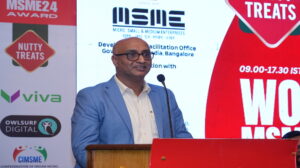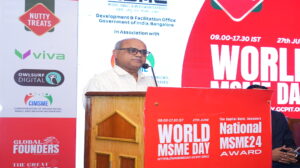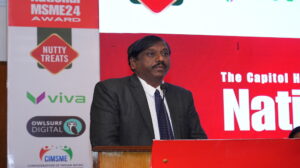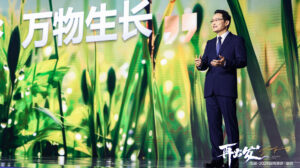Forget Wi-Fi: This startup tech can power the Internet using light bulbs and is 100 times faster

At the age of 22, Deepak Solanki had it all figured out. An engineering student, Solanki toyed with robotics at IIT Bombay and IIIT Hyderabad and wanted to start something in the research space. The year was 2012 and Solanki registered a sole proprietorship business only to stumble across a technology called Light Fidelity (Li-Fi).
The internet today is powered by radio waves and Wi-Fi uses these waves to transmit data or power the Internet. Li-Fi as a technology was supposed to transmit data or power the Internet using light. Coined by Professor Harald Haas of the University of Edinburgh at a 2011 TED Global Talk, the system was to use LED bulbs to deliver networked, mobile, high-speed communication. What is remarkable is the fact Li-Fi can provide Internet speeds that are 100 times faster than conventional Wi-Fi.
“When I stumbled across a technology called Li-Fi, I found it exciting. I started working on it along with a friend and got very good results,” says Deepak Solanki, Founder & CEO, Velmenni Research & Development (India).
By the summer of 2013 Solanki had a working prototype of this technology and was certain his revolutionary tech would find backers. “I was able to transmit data through light and initially thought I should go to a lighting company, since the technology involved LED bulbs. However, no one was interested and I decided to approach investors to raise funds and take my product from a prototype to a working model,” says Solanki, 27.
Solanki was, however, left disappointed again. No investor understood what Solanki was doing and his prototype was either brushed aside as a science experiment or something ahead of time. India was also going through an ecommerce boom and many investors suggested Solanki start something in the online space.
To sustain, Solanki picked up product consulting jobs for different companies in the electronics space till he got a chance in 2014 to join the Buildit hardware accelerator in Estonia. “The idea was to get into an accelerator, raise some seed money, improve on the product and come in contact with investors. We got a small seed round from Buildit and moved to Estonia,” says Solanki.
He joined the three month programme, met the tech community in Europe, pitched to multiple people and also managed to get a real time integration done for his product. “By 2015 we got a deal from an Estonian entrepreneur in the lighting domain to integrate Li-Fi in their LED lights. We created a system that proved that the product worked beyond the lab environment,” says Solanki.
By the summer of 2015, Solanki moved back to India because he wanted to set up his R&D team in the country. “Estonia was a small country and the number of engineering resources available was very less. That increased our cost and it only made sense to carry on with our work in India. By the end of 2015 and early 2016, we raised another round of funds from European investors and managed to get a couple of clients,” says Solanki
Airbus flies in
Around the same time Solanki decided to take part in one of the largest tech conferences in the Nordic region where top tech companies vied for investment opportunities. “We managed to get through to the finale, but we did not win it. We were one of the top three startups there and managed to amaze a lot of people with what we had. We also created a buzz in the media because we were so innovative. After my pitch I met a team from Airbus who showed keen interest in what we were doing,” says Solanki.
Airbus had a corporate accelerator in Germany and wanted Solanki to join it for a period of six months. The aviation giant invited five companies from across the world to be a part of that programme from January 2016 and Velmenni was one of them. “This programme was very helpful and it gave us a direction for our work, especially for the aviation industry. We created a proof of concept for wireless in-flight entertainment system using Li-Fi and presented on the Demo day in July 2016. We tested it on an A-350 flight mockup and it was a huge learning experience for a company like us,” said Solanki.
There was no holding back after that as Solanki’s business started picking up. The work done by Velmenni with Airbus was a huge validation for what the startup had to offer. “We are currently working with Airbus to come up with a large integration within the aircraft and now testing it out in real scenario. Previously it was on a small scale, but even Airbus is so bullish on this technology that it has created a Li-Fi community within the company which is working different stakeholders to come up with the final product that can be integrated in an aircraft,” says Solanki.
Making it work
What puts Velmenni in a unique position is the fact that there are only a handful of companies in this space across the world. Li-Fi is set to completely change the face of the Internet and is now a part of the 5G consortium, which means the 5G infrastructure will be based on both your existing radio wave infrastructure and Li-Fi.
To understand how the technology works, Solanki says Velmenni has created two different devices – one that can be used indoors (inside a building) and the other for outdoor. The indoor solution has an access point and a dongle. The Li-Fi access point is very similar to what you have in Wi-Fi, which is essentially a router. “We plug each of the Li-Fi access point to a light source, which is LED in this case. The router is plugged in between the LED and the LED driver and we have a USB dongle that can be used to connect with a laptop, desktop or smart devices,” says Solanki.
For outdoors, Velmenni has a separate set of devices, which is a replacement of the optical cable infrastructure. “If I need to have connectivity between two points, I can have device A at one point and Device B at the other point and both these devices can communicate through light. These devices can be plugged into street lamps, poles, building and pretty much anything,” says Solanki.
In September 2017 Velmenni did a soft launch of the product at Apex, the Aircraft Interiors Expo in Boston, and demonstrated the value the system can bring. “We are now in talks with big companies to collaborate and bring this technology to real aircrafts,” says Solanki.
Since the summer of 2017, Velmenni has also started generating interest from the Indian market. Different lighting and IT infrastructure companies have approached the startup with the idea of creating specific applications for the Indian market.
“India is different where we do not have a great Internet infrastructure and it becomes important for us to address how Li-Fi can play a role. Outdoor connectivity is a focus area for us in India as we feel there is difficulty in setting up last mile connectivity. There are areas in India where we cannot have optical cables, which means we cannot have high speed internet connectivity. Outdoor light-based communication system can be used to reach such places. We are working with Indian companies where the proof-of-concept has been tested and now figuring out the way forward,” says Solanki.
Solanki says the startup is generating its own revenue, so he is not pressed for investments. From a time when enterprises and investors touted it as a scientific research project, Solanki has come a long way. “We had to move out of India to get the initial response, but once we had the likes of Airbus, people have started taking us seriously. We have undertaken a collaborative approach where we work with multiple partners to commercialize the technology. As an entrepreneur, you need to figure out a way and I think I have been able to do that,” says Solanki.
Name of Company: Velmenni Research and Development Pvt Ltd
Name of Founder: Deepak Solanki
City: New Delhi
Revenues: Undisclosed
Headcount: 14
Industry: High-Tech
Investor Details & Amount Raise: Angle Investors from UK / Undisclosed Pre-Series A






